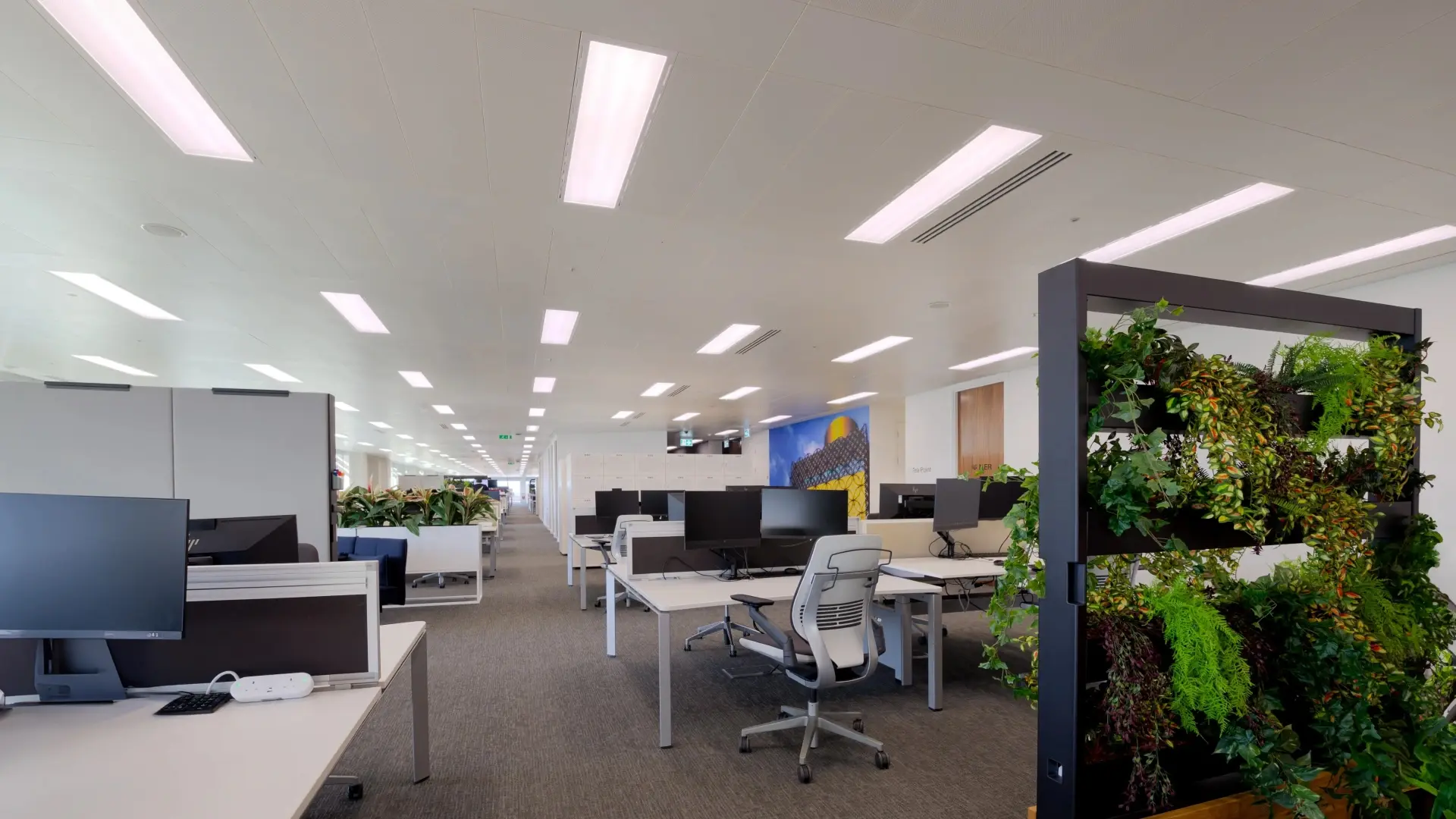How to Create Better Workplaces Using Lighting Colour Temperature

Understanding how lighting colour temperature impacts wellbeing is critical to creating work environments that support overall health.
A research paper published in June 2024 explores how lighting plays a central role in shaping our environment, affecting everything from how we perceive spaces to how we feel within them. The paper focuses on colour temperature as a key factor influencing our physiological and emotional response to lighting.
So, what is colour temperature, and why is it an important consideration in the workplace?
What is Colour Temperature?
Colour temperature, measured in Kelvins (K), describes the hue of a particular light source. Here is a simple breakdown
- Warm White Light (2000K - 3000K): Provides a cosy, inviting glow ideal for creating a relaxed atmosphere.
- Neutral White Light (4000K): Offers a balanced, natural illumination that is versatile for general lighting needs.
- Cool White Light (5000K): Delivers a crisp, bright light that enhances clarity and focus.
- Daylight (6000K): Simulates natural daylight for a vibrant and energising environment.
Each type of light can have different effects on our mood and wellbeing. Warm white light tends to create a sense of comfort and security, while cool white light can promote clarity and focus. These reactions are based on physiological responses.
Light influences the production of hormones such as melatonin and cortisol. Warm white light in the evening can enhance melatonin production, promoting sleep, while cool white light during the day can suppress melatonin and increase cortisol levels, enhancing wakefulness and alertness.
Why is Colour Temperature Important in Workplace Design?
Cool white light or daylight is often used in environments where focus and energy are needed, such as offices, hospitals, and industrial settings. The blue tones in cool light have been shown to enhance alertness and cognitive function, making it ideal for tasks that require sustained attention and precision.
Cool white light can help reduce feelings of fatigue, particularly in settings where people need to stay awake and alert for extended periods. Exposure to cool white light can improve performance on tasks requiring attention to detail and quick decision-making.
Lighting Controls: The Importance of Customisation
While people’s responses to lighting colour temperature can be broadly generalised, research suggests that there is a wide range of personal preferences regarding what constitutes optimal lighting conditions in a work environment. This means that intuitive interfaces and control systems for lighting play a significant role in creating workspaces that support occupant comfort.
According to the Health & Safety Executive, studies show that giving workers in open-plan offices local control of lighting can increase job satisfaction and decrease stress levels. This measure goes beyond the minimum standards of ‘suitable and sufficient’ lighting for the workplace which, as required by law.
The colour temperature of lighting is a powerful tool that can significantly influence our mood and wellbeing. By installing LED lighting and control systems, lighting can be adjusted to suit individual requirement and create a workplace that enhances overall wellbeing.
- As a leading lighting manufacturer committed to supporting better and healthier environments, Tamlite offers a range of lighting solutions designed with wellbeing and the environment in mind. For more information, please visit our website.
- Tamlite offers a FREE lighting survey which explores the potential energy savings your company could make by switching to LED lighting systems. Click here for details.


